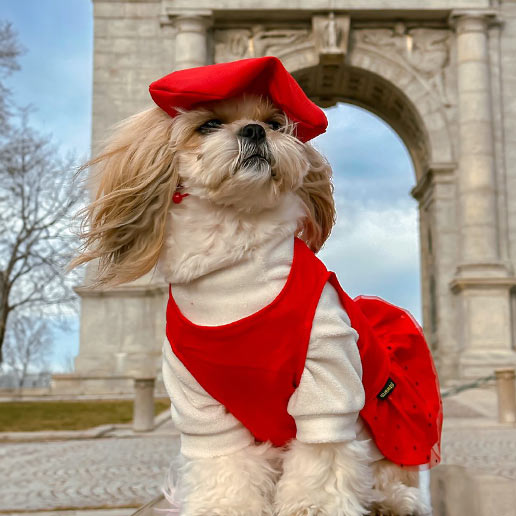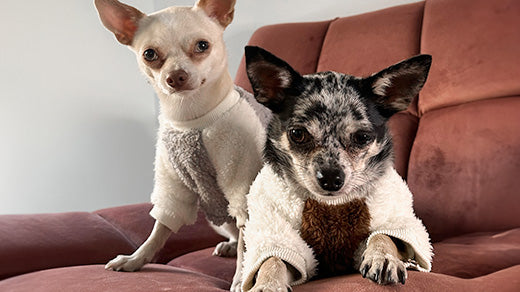What Types of Dog Breeds Don’t Smell or Shed
For people with allergies or who want less cleaning and grooming, certain dog breeds are known for minimal odors and shedding. Non-shedding breeds have hypoallergenic coats that don’t release much dander or hair. Their coats require regular clipping and brushing to maintain this trait. Non-odor breeds also benefit from grooming but naturally produce less oil in their skin and coats leading to less doggy smell. Both types of dogs make excellent household pets for owners looking to avoid the mess and odor issues associated with many dogs.

Which Dog Breeds Don’t Shed Much Hair?
-
Poodle - Poodles come in three sizes: standard, miniature, and toy. All sizes have dense, curly hypoallergenic coats that require regular clipping and grooming every 4-6 weeks to prevent matting. Poodles are considered non-shedding, though their coats still release dander. Their tight curls continuously grow and don't shed off like fur, highlighting the importance of selecting the right type of grooming. Not just any cut will do; Poodle Haircuts: Enhancing Health and Style offers an in-depth look at how the right haircut can support both your poodle's physical health and their lively personality. Poodles are energetic dogs that need daily exercise and play. They are highly intelligent and trainable, doing well in obedience and agility competitions. Poodles make faithful companions and active family dogs.

-
Bichon Frise - The Bichon Frise is a small breed with a fluffy white double coat that is hypoallergenic and non-shedding. Their coats consist of a dense undercoat and coarser outer coat that requires frequent brushing and trimming around the face and paws. Bichon Frises are cheerful and energetic dogs that love playtime and attention but also enjoy being lap dogs. They get along well with other pets and families when provided proper socialization and training. The Bichon sheds minimally and is a good choice for those with allergies.

-
Shih Tzu - Originally bred in China as a royal lap dog, the Shih Tzu has a long, silky double coat covering a sturdy body. Their flowing coat requires daily brushing to avoid tangles and mats. While Shih Tzus do not technically shed, their coat releases dander. Since their hair grows constantly, it needs trimming every few months. For those looking to learn more about canine hair and find effective solutions for dander and shedding, our detailed blog post offers a wealth of information.Shih Tzus have lively, affectionate personalities and do well in apartments. They bond closely with their owners.

-
Basenji - The Basenji is a hunting dog from Africa recognized for its short, fine coat that doesn’t shed much. Basenjis groom themselves like cats, rarely emitting a doggy odor. While Basenjis don’t require much coat maintenance, they have high exercise needs and want lots of daily activity. They also exhibit more independent, aloof behavior compared to other breeds. Intelligent and energetic, Basenjis will appeal to active owners looking for minimal shedding.

-
Yorkshire Terrier - Also called Yorkies, Yorkshire Terriers are one of the most popular small breeds. Weighing under 7 pounds, Yorkies have long silky coats that require daily brushing to prevent mats and tangles. For owners looking for stylish, easier-to-maintain options that reflect the latest trends, considering a short haircut can be a game-changer. To explore various fashionable cuts, dive into our Visual Guide to Yorkie Short Haircuts. Although Yorkies do not shed significantly, their hair can cause reactions in allergy sufferers if not properly maintained. Yorkshire Terriers have big personalities in a small package - they are vivacious, tenacious, and devoted to their families.

-
Chinese Crested - The Chinese Crested comes in two distinct varieties: the hairless, with hair only on the head, tail and feet, and the powderpuff, completely covered in a soft, silky coat. Both have minimal shedding, making them a good choice for allergy sufferers. The powderpuff’s long coat requires frequent brushing and grooming. Chinese Crested dogs are affectionate, lively, and enjoy being with their owners.
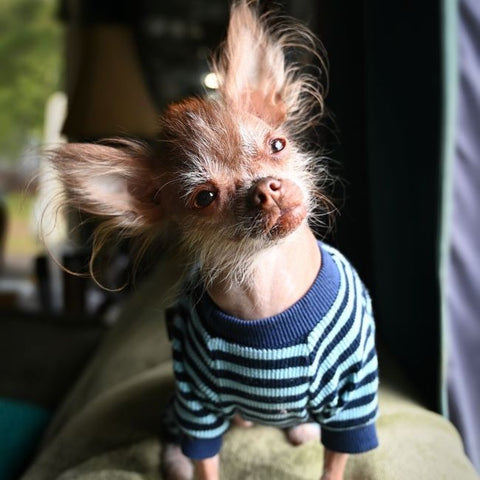
What are the Least Smelly Dog Breeds?
-
Poodle - In addition to being non-shedding, Poodles are also known for having minimal doggy odor. Their dense, curly coats don’t hold onto smells or oils like other breeds. Still, regular bathing and grooming every 4-6 weeks is important to keep Poodles fresh. This also removes loose hair and dander. Poodles produce less allergens overall, making them a top choice for allergy sufferers. They are energetic, smart and trainable dogs.

-
Basenji - The Basenji’s short, fine coat gives this breed a cat-like odor-free quality. Basenjis naturally spend hours grooming themselves, keeping their coats clean. They also have fewer oil glands than other dogs, producing less of that characteristic doggy smell. While Basenjis are clean, they have high exercise needs and can be challenging to train. Their independence and aloofness contrasts with most breeds that crave human interaction.

-
Maltese - Covered in a long, silky white coat, Maltese dogs require daily brushing but do not give off a strong odor. Their single coats release less dander and oil. Regular bathing every few weeks will keep the Maltese smelling fresh. Underneath that beautiful coat, Maltese are playful, affectionate companion dogs who thrive on being with their owners. They can be more delicate due to their small size.

-
Boston Terrier - The Boston Terrier has a short, smooth coat that requires little grooming and doesn’t hold onto smells. Their minimal shedding also cuts down on odors. Bostons only produce a minor odor when in need of a bath. Friendly and lively, Boston Terriers often have amusing personalities that endear them to owners. They make excellent apartment dogs due to their small size but do need some daily exercise.
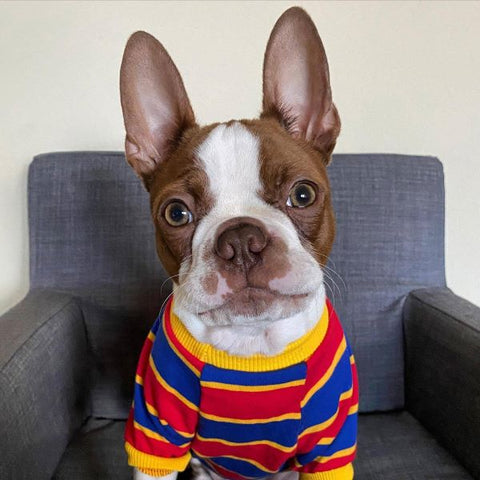
-
Scottish Terrier - Also called Scotties, Scottish Terriers have a hard, wiry outer coat with a soft undercoat. Their unique coats don’t trap odors or shed much. Scotties only require weekly brushing and hand-stripping of dead coat hairs twice a year. While maintenance is minimal, Scotties need plenty of exercise to satisfy their high energy. Scotties are independent but loyal and make alert watchdogs.

-
Schnauzers - Standard, miniature, and giant Schnauzers have wiry coats that do not trap odor-causing bacteria. Their beards and leg furnishings require regular cleaning to avoid smells, however. Schnauzers hardly shed and only need occasional brushing and hand-stripping. While schnauzers have terrier traits like independence, they are also highly trainable, intelligent dogs. They make excellent watchdogs and like being active family members. Minimal grooming, low odor, and loyal temperaments make Schnauzers a top choice.

Tips for Managing Dog Shedding
While some breeds shed less, no dog is completely non-shedding. Here are some tips to manage shedding:
- Brush your dog regularly using a slicker brush to remove dead hair. Brushing stimulates the coat to shed loose hairs.
- Bathe your dog monthly or as needed using a mild shampoo. Bathing helps loosen dirt and dead hair in the coat.
- Use deshedding tools like shedding blades or glove brushes to remove loose undercoat hair.
- Vacuum pet areas frequently using a vacuum meant for pets. Vacuuming helps remove shed hair before it spreads.
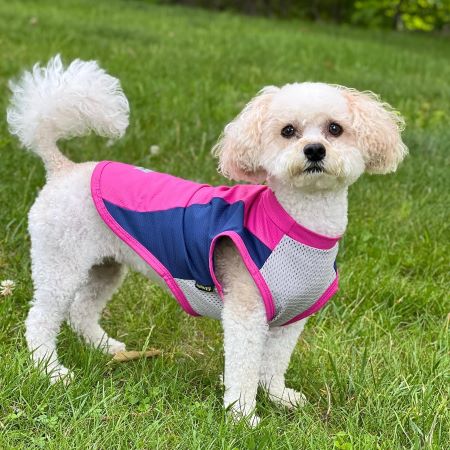
- Use lint rollers on furniture and pet beds to easily remove shed hair. Rollers pick up light debris.
- Change air filters monthly so AC and heating systems don’t circulate shed pet hair.
- Groom your dog professionally several times a year to thinning out dense coats. Professional grooming removes large amounts of hair.
- Consider giving supplements like fatty acids to improve skin and coat health, reducing shedding.
- Keep your home cool and humidified. Warm, dry air can increase static and hair shed. Cool air lowers static.

With routine grooming, cleaning and prevention methods, owners can successfully manage shedding, even in heavy shedders. The keys are consistency and persistence.
Tips for Reducing Dog Odor
While some breeds naturally have less odor, any dog can benefit from care that reduces smelly dog aroma:
- Bathe your dog monthly or as needed using dog-safe shampoo and conditioner. Bathing removes dirt, oil and odor from the skin and coat. But, how often should you really be lathering up your pup? That varies on factors such as breed, age, and health. For a detailed guide on how often you should wash your dog, check out our informative blog post.
- Brush teeth weekly using vet-approved dog toothpaste. Dental hygiene reduces bad breath.
- Clean face folds, ears and skin wrinkles where bacteria and yeast can build up. Use dog-safe wipes to keep these areas clean.

- Maintain a regular grooming schedule appropriate for your dog’s coat type. This removes dirt, dead hair and debris harboring odor.
- Clean your dog’s bedding at least weekly using an enzymatic cleaner to kill odor-causing bacteria. Keep their environment clean.
- Vacuum and mop tile, hardwood and vinyl floors frequently to remove hair, dander and other debris that collects odors.
- Open windows regularly for ventilation. Stale air allows odors to build up. Fresh air circulation helps reduce smells.

- Use air purifiers and fresheners made for pet odors. These can filter out and neutralize doggy aroma.
- Change AC and heating system filters monthly to prevent recirculation of odors.
- Feed high quality dog food. Better digestion leads to less gas and stool odor.
- Address underlying issues like skin allergies, ear infections or dental disease that could contribute to odor.
With proper care, most dogs’ natural odors can be kept to a minimum so they stay clean and pleasant smelling.
Final Thoughts
The non-shedding and non-odor breeds discussed showcase desirable traits for many prospective owners. With minimal grooming needs and reduced allergens, these dogs can make excellent household companions. Their energetic yet friendly personalities enable them to thrive as family pets and service animals. For those seeking an obedient, loving dog without the smell and mess, these breeds fit the bill.









